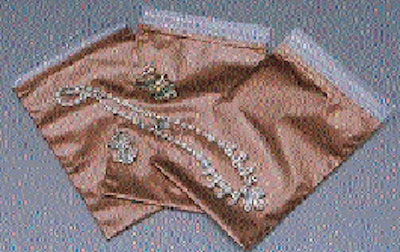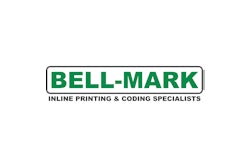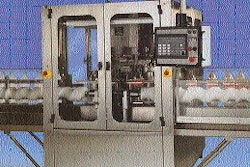Technical achievements in flexible packaging were dominant among the winners in the '94 Flexible Packaging Assn. packaging competition. The winners were announced during FPA's annual convention in early March in Naples, FL. As good as they were, it's also safe to say they were unusual-not the kind of applications that are likely to inspire many followers. Easily the most unusual is a three-side-sealed pouch made from a silicon-oxide coated polyester laminate (1). Such "glass-coated" films have attracted considerable attention in recent years for their ability to combine high barrier properties with clarity. But they're expensive, so the number of applications have remained somewhat limited. The pouch is used to hold blocks of cesium iodide crystal for an experiment in particle physics at Fermi National Accelerator Laboratory, Batavia, IL. Fermi's pouches are made by Proven Design (Palmyra, NY). The pouch material, called Clearfoil®, is supplied by Rollprint (Addison, IL), which won the award. It buys SiOx-coated polyester and laminates it to a layer of heat-seal material. Total thickness is 3.5 mils. According to Fermi's Ron Ray, the blocks come in two sizes: 1" x 1" x 20" and 2" x 2" x 20". They're produced in France, Japan, and the U.S., but the sheer number of blocks Fermi needs for this particular experiment, 3ꯠ in all, make it impossible for the suppliers to deliver them fast enough. So for the past three years, Fermi has been building an inventory of the blocks as fast as the suppliers can make them. Come November, there will finally be enough blocks to begin the experiment. The reason they're being stored in pouches of ClearFoil is that they're highly hygroscopic. The ClearFoil material reduces water vapor transmission rates to less than 0.02 g/100 sq "/24 hours. Also included in each pouch is a moisture level indicator that turns red if moisture becomes a problem. Here's where the clarity of the ClearFoil material comes in. If the material was not clear, the indicator would be useless. Corrosion-inhibiting bag Com-Pac Intl. (Carbondale, IL) won an award for a bag it calls TarnishGuard® (2). The bag material neutralizes corrosive gases from the atmosphere, protecting corrosion-sensitive products such as precious metals, jewelry and fine art pieces. Com-Pac is mum on the specific corrosion bag structure, though sales manager Elizabeth Teifer says, "it's a coextruded, low-density polyethylene-based structure that includes copper and is available in 2- to 5-mil thicknesses." This technology, Com-Pac tells PW, was invented by AT&T Bell Labs. "Com-Pac is one of 16 AT&T licensees that use our Corrosion Intercept technology in manufacturing," says John Franey, member of AT&T's technical staff. "The technology scavenges and neutralizes corrosive gases from the atmosphere within the bag," he continues. "There are sacrificial materials bonded into the polymer matrix during resin compounding. And, the technology works with various resins, though Com-Pac is using LDPE." Besides film, Franey says the technology can be applied to flat sheetstock in thin and thick gauges, and in injection-molded products and thermoformed blisters. One of the first users of the TarnishGuard bag is the Solomon R. Guggenheim Museum in New York City. The museum, which houses a modern and contemporary collection, began testing the bags about six months ago, according to Carol Stringari, conservator. Com-Pac produces the material in roll form, but it also cuts it into individual bags and prints them flexographically. Most bags range in size from 4" x 6" (as in the accompanying photo) to 24" x 24". The Museum uses the material in roll form to protect brass and copper sculpture as tall as 6'. "It's financially advantageous for us to make our own bags here, as we are a nonprofit organization and have to control our costs," she says. "After we put the sculpture in the Intercept material, we place it in a wooden crate with shock absorption and insulation materials." And how has the material worked so far? Stringari summarizes, "The technology has exciting potential for us. It has done the job since we've been using it, both to store valuable pieces and in shipping them to other museums where those pieces are exhibited and then returned to us." Loads of attributes Environmental benefits are just some of the advantages of the CCREO bag (3) for DowElanco's Dursban professional insecticide. It brings a whole host of properties to its Indianapolis, IN-based user. The package was extensively covered (see PW, Nov. '94, p. 38). The FPA award was won by Bell Flexible Packaging (Columbus, GA), the primary converter of the rollstock. In the end, the bag is fabricated by PacTech (Fairport, NY). With an open bottom, the bag is loaded with seven water-soluble packets of Dursban insecticide and heat-sealed. It replaces a multilayer fiber canister that was tough to load, difficult to unpack and costly. Using a reverse-printed polyester/adhesive/aluminum foil/ Valeron® cross-linked high-density polyethylene/heat-seal coating, the pouch provides moisture protection, abrasion-resistance, durability and a good print surface. An integral zipper makes it easy to open once the protocol-proven child-resistant lock is released. Valéron is from Valéron Strength Films (Houston, TX). The pouch's environmental attributes include using 77% less space than the previous canister and two-thirds fewer package components. While it costs 25% less to make, the flexible pouch saves 57% in transport costs and it improves packaging output by about 22%. So its strong "green" attributes are augmented by the valuable performance properties this specially designed package delivers. Not only has it produced strong acceptance from the marketplace, the package designers are already working on improvements. According to Angela Agrwal of DowElanco, package developers are near to testing a new CR lock feature that will cut costs and be easier to open. Another Dursban, another winner A different Dursban, this one for home use, marketed by The Solaris Group, San Ramon, CA, is now appearing in a new package (4) that received an award for James River Corp. (Cincinnati, OH). The Solaris Group is a combination of Monsanto's Roundup weed killer and the consumer products of Chevron Corp.'s Ortho group that Monsanto acquired nearly two years ago. The new package for Dursban is a multilayer plastic film stand-up pouch that replaces a rather drab multiwall paper bag. The 9-lb pouch with zipper reclosure is already showing strong consumer and trade acceptance, says Andy Last, manager of Ortho products for Solaris. The Dursban package emerged from a mandate to focus on consumer needs. "Whatever Solaris does in packaging structure and design is consumer driven: key factors are convenience, ease of use and ease in understanding the product," says Jim Styne, Solaris package design and development specialist. The former package had outlived its usefulness. "An objective look told us the graphics were dated, the text was dated and consumers couldn't understand how to use the product properly," Styne says. "We also knew the tried and true multiwall bag did not permit the graphics that products need in today's garden center and do-it-yourself marketplace." Along with these marketing factors, Solaris recognized that insecticides must be protected throughout distribution: punctured bags aren't acceptable to either the trade or to the consumer. The new stand-up bag is made of a multilayer 7.5-mil composite film that consists of reverse-printed polyester, metallized polyester and linear low-density polyethylene. In part, that's because the package is often displayed outside where it may come in contact with the elements. The multiwall paper bag could deteriorate under these conditions; the metallized polyester provides a long-term barrier against moisture. These bags are considered the first application of what James River calls Doyn-style (Doy-pack) pouches with zipper reclosures for this package size and category. Tight timetable We wanted to establish a partnership with a solid, technically-sound company," Styne says. "We'd known James River for many years, and we felt they were an organization that could make this happen-and they did. If you look out over the field, there are not many companies that have what it takes to make an innovation like this happen on a quick timetable." Together the two companies designed a structure that offered barrier protection and used reverse printing to protect the graphics so it couldn't be abraded or rubbed off. The metallized polyester offered excellent barrier properties to moisture and light, while it and the resealable zipper helped to contain the chemical odor of the product. With the multiwall bag, product smell could be offensive. The combination of plastic materials make the new bag far superior to the paper bag in puncture resistance. The bag style was an important benefit. The new package can be displayed either lying flat with the gusset copy facing out or standing upright. Upright is the preferred method since the full front panel graphics can be displayed. Images tell story "The paper substrate we had been printing on in the previous package didn't allow the fine detail we get with printing on a plastic web," Styne points out. The new design features pictorial representations of the pests and insects controlled by the product on the both the face panel and bottom gusset. James River prints by flexo, using photopolymer plates, in six colors. Special heat-resistant inks are used to prevent blistering or delamination during the heat-sealing process. To get a better "pop" from the graphics, the reverse-printed polyester is laminated to the metallized polyester using a polyethylene laminant that's tinted white. Part of the redesign was to clarify the usage instructions for the public. "We went through and reassembled the text in a way that made it more understandable to consumers," Styne says. In addition, the new package has some convenience features that were not possible with the multiwall bag, including a die-cut carry handle and the zipper reclosure "We recognized that this package responds to consumer needs and to retailer needs. Ultimately, that means our needs as well," says Last. European expectations Andy Last came to Solaris from Monsanto's European business group. As such, he was accustomed to the European focus where packaging plays a more important role in a product's success than is typically true for similar products in the U.S. Plus the stand-up pouch is more common in Europe. "The stand-up pouch brought us the ability to have better product merchandising, and we expect we will see significant market gains," Last predicts. And probably hopes. If the volumes increase significantly, it may permit Solaris to shift from manually filling premade bags into a form/fill/seal style operation. As well, both James River and Solaris know that the material was selected with an eye to making sure it would do the job. In fact, says Styne, not only is there a possibility of downsizing, but also perhaps to use post-consumer resin in the structure. To be sure, many flexible packaging winners will have far broader appeal than these four structures. These unusual materials, though, indicate how creative converters can custom tailor materials for specific requirements.



























